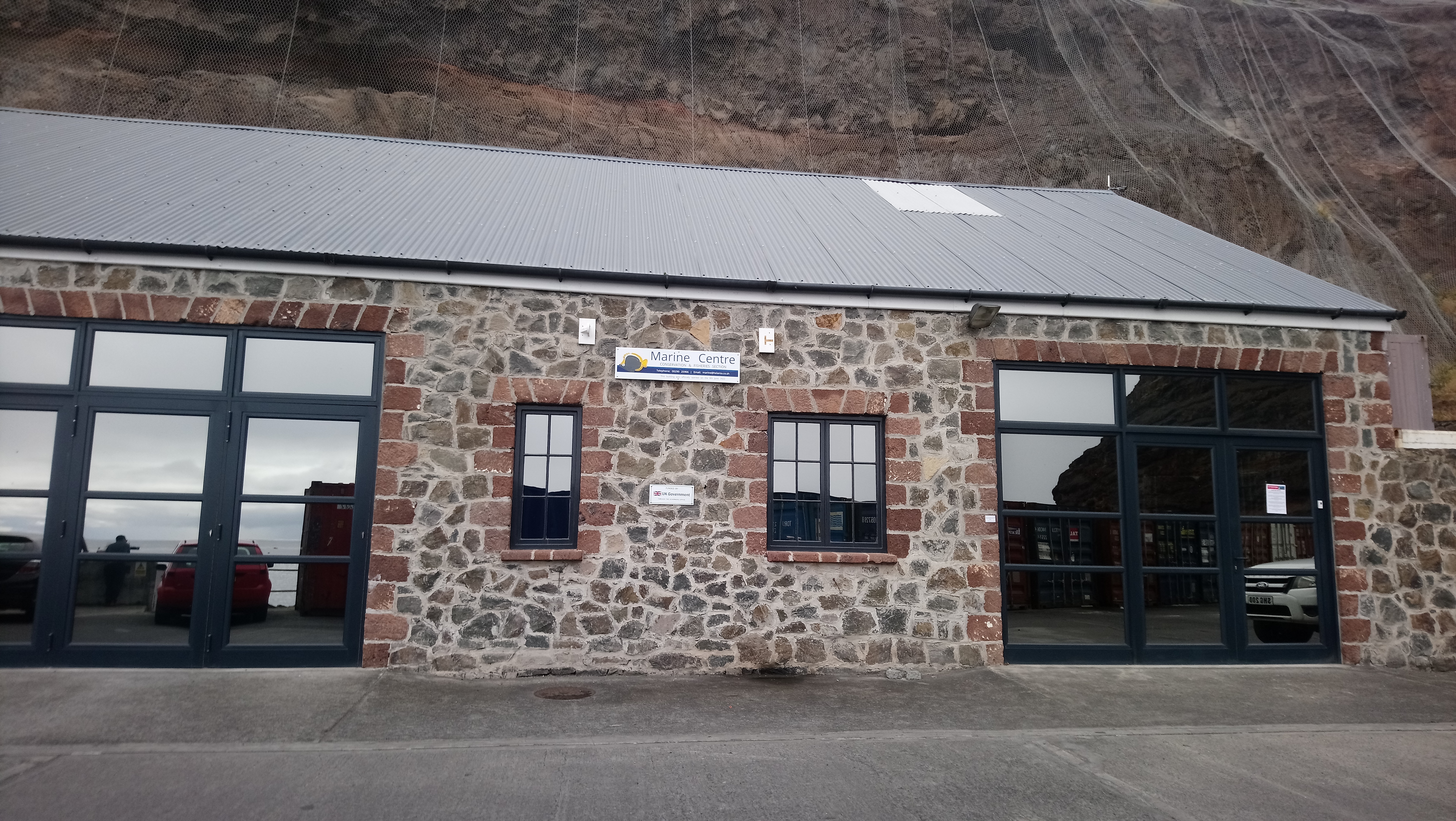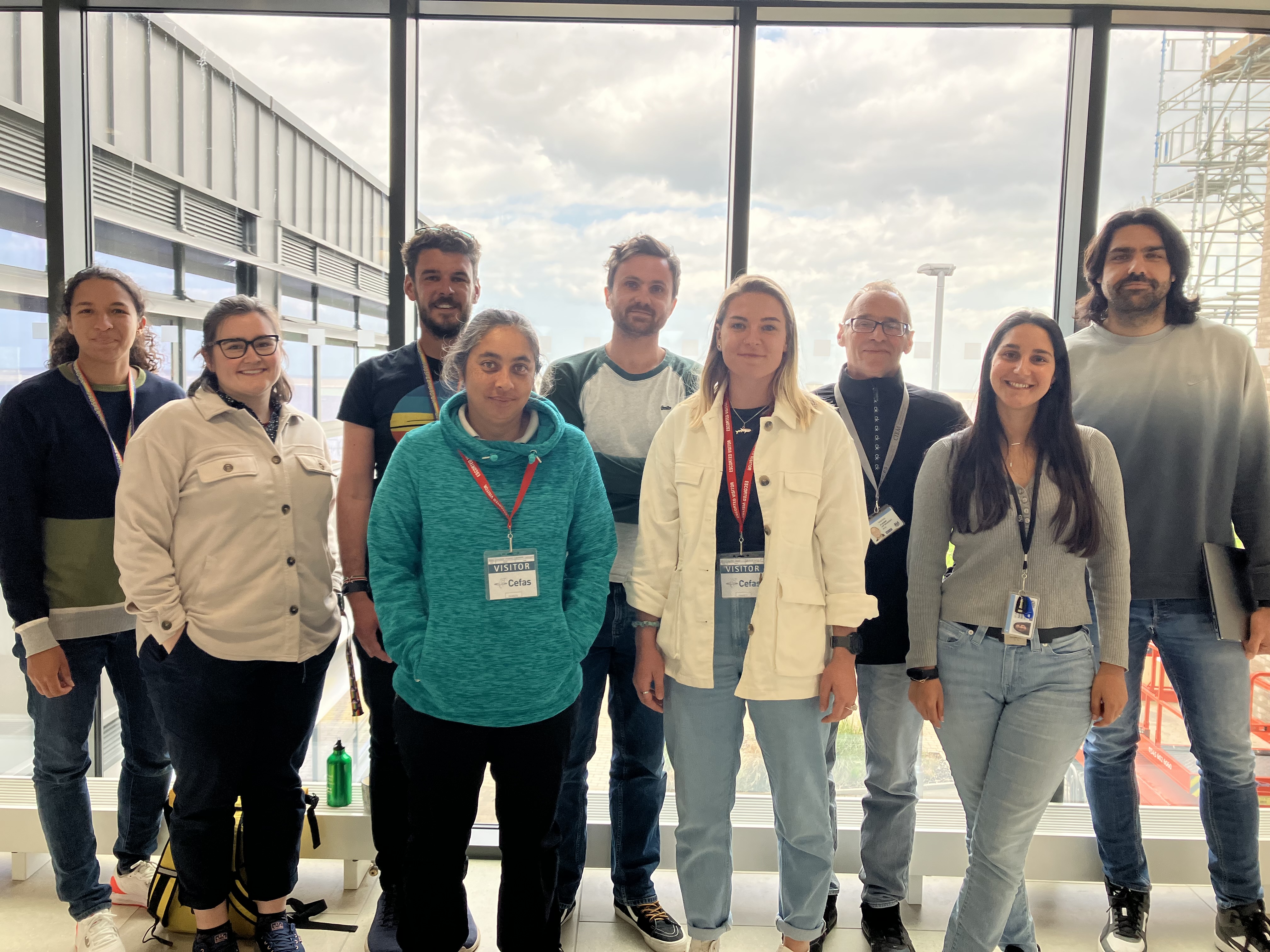On 9th May two staff members from St Helena Government’s Marine and Fisheries Conservation section, Kirsty Jones and I (Leeann Henry), visited the UK as part of a Blue Belt Programme funded three-week training and exposure trip.
What is the Marine and Fisheries Conservation Section?
St Helena’s entire 200 nautical mile Exclusive Economic Zone (EEZ) was designated as a Category VI Marine Protected Area (MPA) in September 2016. This was around a similar time the UK Government launched its Blue Belt Programme, and since then St Helena has been working with the Centre for Environment, Fisheries and Aquaculture Science (Cefas) and the Marine Management Organisation to achieve its research goals and management objectives.
Marine management in St Helena is risk based and driven by the island’s marine management plan. Recently a comprehensive review of the 2016 marine management plan was undertaken with local and international stakeholders, and a new management plan was officially endorsed and ratified by local politicians in March 2023. This sets out our marine management goals and objectives for the next five years.
St Helena Government’s Marine and Fisheries Conservation section lead on island research to inform policy and management measures for the MPA. On the 8th June 2022 a Blue Belt funded marine lab and office facility was opened at the wharf in Jamestown, which allowed the Marine and Fisheries Conservation section to work in a fit for purpose environment and state of the art facility. Staff who work in St Helena’s MPA must be versatile and be able to collect and present data from various disciplines, ranging from fisheries science, oceanography, water quality, tourism management and climate change.

Getting insights into a wide range of scientific processes
The first aim of our UK trip was to allow us to be exposed to specialist scientists in their lab environment, to understand how different field samples are processed, read and presented. For example, we visited the Cefas otolith processing lab where we saw the processing of the otoliths into a final product. Usually we just collect the samples in their whole state and we issue a report of the findings. This experience will allow us to better understand the otoliths we collect, and ultimately better inform management.
Whilst there we also had an opportuning to view Cefas’ water quality and nutrient sampling lab. This work area is something that the island will be developing over the next five years, and we were given an insight into how this could work for us.
When we’re conducting fieldwork and collecting different types of data, if we understand the requirements for the data and the sampling process, it allows for a higher quality of sample collection, and in turn leads to a better quality of data. Exposure to a more specialist lab environment also allows local staff to understand what the limitations are on-island when it comes to technical experience and expertise, equipment and management of waste.

During our visit we were also shown the new equipment that is being shipped to the St Helena for some of our new work areas, like the upcoming fish egg survey we will be conducting. As the vessels that we would use in St Helena to conduct this work are significantly smaller than survey vessels in the UK, Cefas have custom built a plankton net for us to use in the future.

The trip also allowed us to spend time networking with colleagues within organisations we currently work with to discuss on going work and next steps. Networking is important as it helps to establish connections and relationships, allowing an easier transfer of knowledge as well as providing a more detailed background on the island, as in-depth context is needed to help in the understanding of how they can support in delivering new and current work streams.

Getting the most out of our UK visit
While we were in the UK we also travelled to the Cefas Weymouth lab, which specializes in fish pathogens and diseases. We were given practical experience in the process of sampling moribund (dead or dying) fish for histology and microscopy. Again, this allowed us to be exposed to specialist scientists in their lab environment to understand how field samples are processed and read.
The role of the fish inspector was also very interesting to find out more about, as it is very varied. A fish inspector inspects wild areas, aquaculture and ports to monitor fish health both from a human consumption perspective and the transmitting of disease between stocks and populations. The biosecurity requirements of a fish inspector is very stringent to limit the transfer of disease, and we enjoyed finding out more about this role.
The visit to the UK meant that we were able to renew our sea survival training and ENG1 medicals which are necessary for participation in large-scale research expeditions, such as the recent Blue Belt DY159 survey.
Overall, the visit was a great opportunity to meet colleagues in the UK in person, and explore how the Blue Belt Programme is supporting with our science needs to ensure we put in place evidence-based management for our MPA.
Leave a comment